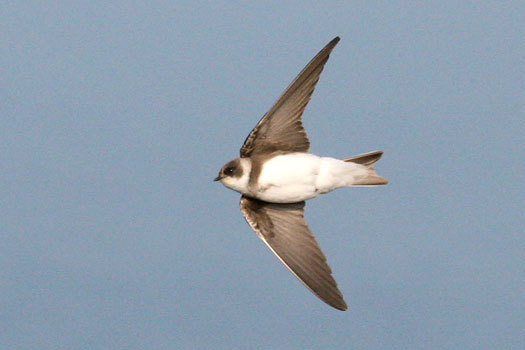
Riparia riparia
SUBFAMILY
Hirundinae
TAXONOMY
Hirundo riparia Linnaeus, 1758.
OTHER COMMON NAMES
English: Bank swallow; French: Hirondelle de rivage; German:
Uferschwalbe; Spanish: Aviуn Zapador.
PHYSICAL CHARACTERISTICS
5 in (12 cm); 0.5 oz (14 g). The back and wings are colored
brownish, with a white chin and belly and a brown band across
the chest.
DISTRIBUTION
Breeds widely throughout most of Eurasia and North America.
It migrates to spend the non-breeding season in southern parts
of its range, including central and northern South America and
south and Southeast Asia.
HABITAT
Often occurs in the vicinity of high sandy banks and cliffs near
water, but may also breed away from water in old sand quarries.
BEHAVIOR
A migratory species that winters in southern parts of its range.
Attracts a mate and defends a nest site by song and aerial maneuvers.
The most common call is a hoarse, whetstone-like
sound.
FEEDING ECOLOGY AND DIET
Feeds on flying insects that are caught on the wing.
REPRODUCTIVE BIOLOGY
Monogamous. Builds a nest at the end of an approximately 3-ft
(1-m) long passage dug into an earthen or sandy bank. The
clutch consists of three to six white eggs. There are from one to
three broods per season, depending on the local food availability.
CONSERVATION STATUS
Not threatened. A widespread and abundant species.
SIGNIFICANCE TO HUMANS
A familiar and popular bird to many people.
Other popular Animals
Photo Gallery of - Sand martin




 Animalia Life
Animalia Life